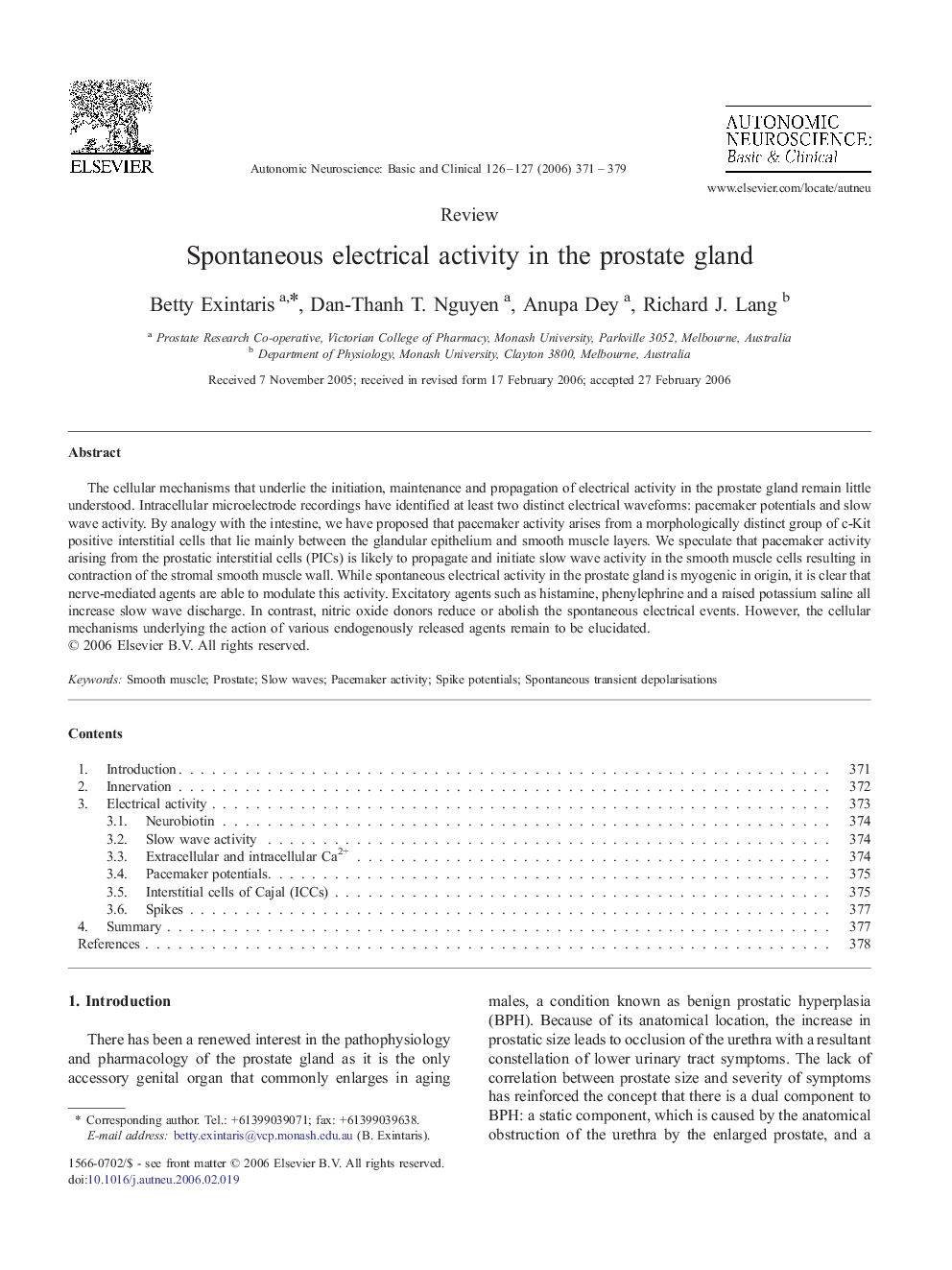| Article ID | Journal | Published Year | Pages | File Type |
|---|---|---|---|---|
| 3035875 | Autonomic Neuroscience | 2006 | 9 Pages |
The cellular mechanisms that underlie the initiation, maintenance and propagation of electrical activity in the prostate gland remain little understood. Intracellular microelectrode recordings have identified at least two distinct electrical waveforms: pacemaker potentials and slow wave activity. By analogy with the intestine, we have proposed that pacemaker activity arises from a morphologically distinct group of c-Kit positive interstitial cells that lie mainly between the glandular epithelium and smooth muscle layers. We speculate that pacemaker activity arising from the prostatic interstitial cells (PICs) is likely to propagate and initiate slow wave activity in the smooth muscle cells resulting in contraction of the stromal smooth muscle wall. While spontaneous electrical activity in the prostate gland is myogenic in origin, it is clear that nerve-mediated agents are able to modulate this activity. Excitatory agents such as histamine, phenylephrine and a raised potassium saline all increase slow wave discharge. In contrast, nitric oxide donors reduce or abolish the spontaneous electrical events. However, the cellular mechanisms underlying the action of various endogenously released agents remain to be elucidated.
